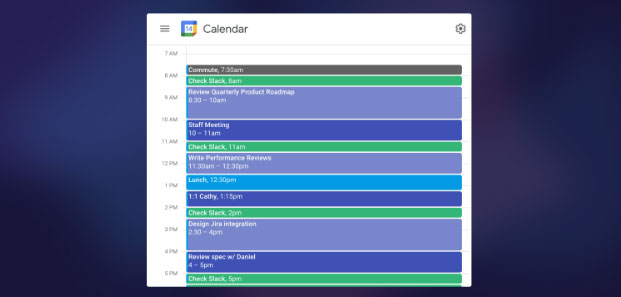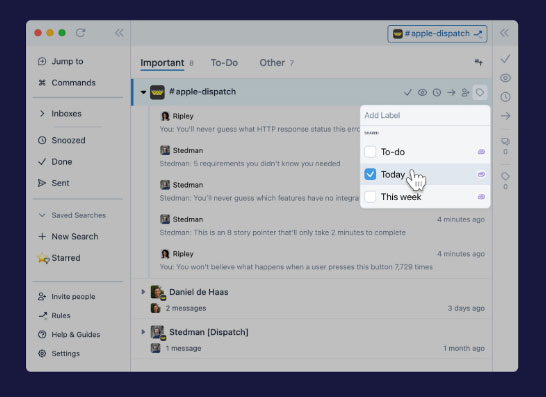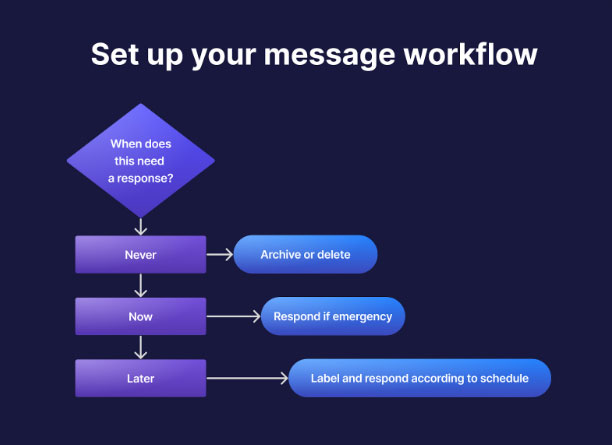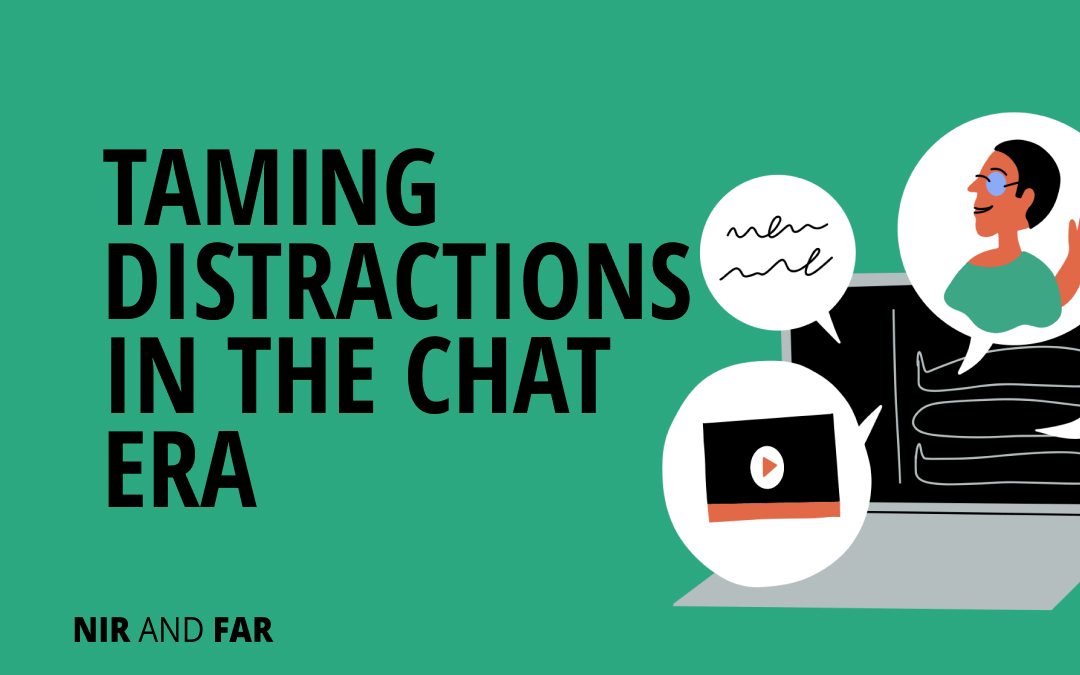Nir’s Note: This guest post is by Stedman Blake Hood, Co-founder and CEO at Dispatch.
When they came on the scene in the 2010s, enterprise messaging apps delivered the fast collaboration companies craved. A new world of internal messaging dawned in which anyone could ping anyone and get a near-immediate response.
But in offering a potent solution, group messaging apps also introduced a problem: constant distraction at work. We’re drowning in notifications that lure us to diversion and degrade productivity.
The features we love—quick information exchange, naturally flowing communication that feels like an in-person conversation—have a dark side.
Group chat happens in real-time all the time. We’re vigilant about checking frequently. The pull of these apps’ variable reward is strong, persuading us to check every 6 minutes for new messages. To miss a virtual “tap on the shoulder” from a teammate would be a faux pas! Behind any one of those unread notifications could be an urgent request.
The sheer number of messages further convinces us to stay active and available on chat apps.
In 2021, the average worker received 125 Slack messages a day—and that’s just one group messaging app. Ninety-one percent of businesses use at least two, according to a 2019 survey of more than 200 IT managers and administrators.
And the worst part? Unlike email, group messaging apps don’t have an inbox. So we struggle to stay on top of the flood of chat messages without losing sight of our priorities.
Nir Eyal has excellent ideas about how to become indistractable with your email. The same principles can be applied to group messaging apps like Slack and Microsoft Teams. In this article, I’ve adapted the methodology in Nir’s book Indistractable to group messaging.
Schedule time to check your messages
Whether you’re a manager or an individual contributor, you probably feel like you need to check your messages all the time.
But you don’t.
Instead, timebox short periods of time throughout the day to review messages—and schedule-sync with stakeholders so they know when you’re available:
- Start by figuring out how often you have to check messages. Work backward from your role and responsibilities to determine an acceptable response time for the people you work with. How long can they wait for a response from you without it negatively affecting them?
- Block off time for these checks on your calendar and share it with stakeholders. You can even display your availability on your messaging app. Then practice only checking your messaging app—Slack, Teams, Cisco Jabber, whatever you use—during the scheduled periods.
Free Schedule Maker Template
Take back control of your time and design your ideal day.
Your email address is safe. I don't do the spam thing. Unsubscribe anytime. Privacy Policy.

Schedule-syncing with your colleagues and managers in this way holds you accountable and fosters transparency and trust. They’ll know when they can reach you, and you get uninterrupted periods to focus.
Your customers don’t need to see your calendar, of course, but by only responding during set times of the day, you train them to expect a response in due course while giving you the undisturbed time you need to do your best work.

Schedule dedicated time on your daily schedule to check your messages
Set up your triage workflow
Just like email, checking your messaging app isn’t so much the problem as habitual rechecking. The solution is simple: Only touch each message thread twice.
Label first, respond later
For email, the first “touch” is to view a message, determine when it needs a response, and use tags to label it “Today” or “This Week.”
Since messaging apps don’t have a built-in inbox or tags as email does, you can use Dispatch to add labels that organize your messages. Messages stay in your Dispatch inbox until you take action on them.
Another option is Front, which gathers all messages from email, social media, and more into one inbox where you can tag them.
Using such tools, build a triage workflow: The first time you touch a message, ask yourself: “When does this need a response?”
- Now. If the answer is now, respond right away if it’s a true emergency.
- Never. If no response is necessary, then archive the message, just as you would an unimportant email.
- Later. If the answer is later today or this week, label the message as such.
For example, if you’re asked to give feedback on a draft by the end of the week, add the label “This Week” and move on to the following message. If you’re asked for something more time-sensitive, add the label “Today.”

Ask yourself “When does this message need a response?” and label it accordingly.
Only respond when a message needs a reply now
The second time you touch a message is when you’re ready to take action on it.
Go through your messages labeled “Today” during the time you’ve set aside on your timeboxed schedule.
Just as you schedule a time to check and filter your messages, you should schedule this time on your daily calendar. (I like to use 5-6PM at the end of my work day.) By the end of this session, all “Today” messages should be responded to and archived.
To tackle the messages and tasks set aside for “This Week,” similarly schedule a time on your weekly calendar.
It may take you more or less time to go through all your messages from day to day. But by keeping track of how long a fixed number of messages take on average, you’ll get better at planning the right amount of time tomorrow and the next day. You may even plan to have buffer time built into your schedule.
Reclaim control of your attention

Group messaging apps have made it easy for people to communicate and collaborate—and to interrupt and distract each other. Today 40 percent of workers don’t get more than 30 consecutive minutes of focused work in a day because of how often they check communication channels.
Only by proactively reining in the external triggers of messaging apps can we ensure they help us achieve our goals rather than distract us from them.
Remember, you can hack back your messaging app by using software and implementing boundaries:
- Schedule time to check your messages
- Set up your triage workflow to label messages by when they need a reply
- Put time on your timeboxed calendar to reply based on your schedule
For more ways to become indistractable, download the free workbook.
Nir’s Note: This guest post is by Stedman Blake Hood, Co-founder and CEO at Dispatch.
Related Articles
- Schedule Maker: a Google Sheet to Plan Your Week
- Habit Tracker Template in Google Sheets
- The Ultimate Core Values List: Your Guide to Personal Growth
- Timeboxing: Why It Works and How to Get Started in 2025
- An Illustrated Guide to the 4 Types of Liars
- Hyperbolic Discounting: Why You Make Terrible Life Choices
- Happiness Hack: This One Ritual Made Me Much Happier

